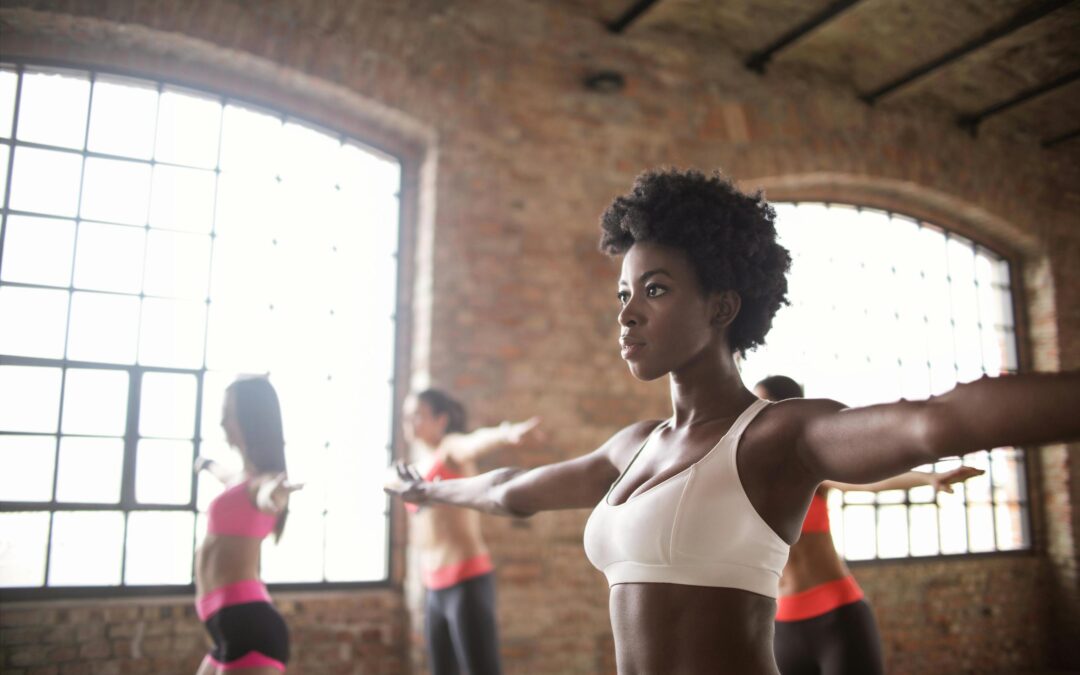Last time, we talked about the importance of listening to our bodies – a fundamental step in not just avoiding over-exercise, but also for good selfcare. Today, let’s finish the conversation with a focus on finding the exercise routines that truly support our health and wellbeing.
Exercise isn’t one-size-fits-all. It’s a personal journey, influenced by our unique bodies and individual circumstances. While statistics and the latest scientific research offer valuable insights, it’s essential to remember that our bodies often have their own unique needs, which can change at any given moment.
Remembering why we do exercise
First things first – exercise should be enjoyable. If you dread your workouts, you’re doing it wrong. Sure, there may be moments of discomfort or resistance as you challenge yourself, but overall, exercise should leave you feeling energised and uplifted, not depleted or demoralised.
When it comes to choosing your workouts, keep it simple. Exercise doesn’t have to be complicated or fancy to be effective. Whether it’s a brisk walk in the park, a yoga session in your living room, or a bodyweight workout at the gym, it’s about finding activities that you enjoy and that fit into your lifestyle.
However, consistency is key. Focus on making movement a regular part of your life, rather than an occasional chore. I highly recommend creating a structured weekly routine, which you add to your schedule, rather than leaving it for when you suddenly find the time or feel like exercising … Because, let’s be honest, both of those are likely to be rare occasions!
For many people, exercise is driven by the desire to achieve a certain weight or physique. While those are usually valid goals, it’s important to consider the broader picture. Sometimes, what seems beneficial on the surface may not align with our body’s deeper needs. That’s where listening to our body’s symptoms becomes crucial – those subtle signals that tell us whether our chosen exercise regimen is truly good for us.
My client’s story
Take, for example, the experience of a client of mine who loved the popular CrossFit exercise regimen. She worked in a stressful corporate environment and religiously stuck to 1.5-hour CrossFit sessions three times a week after work. CrossFit typically involves heavy weightlifting and high-intensity cardio in an adrenaline-charged atmosphere, where the culture encourages pushing one’s limits to the extreme.
While her primary goal was weight loss, despite losing a little weight, her sleep quality suffered on training days. As time went by, she also began experiencing injuries and acne, yet persisted with her gruelling CrossFit routine. She came to me feeling frazzled, chronically tired, irritable, and disheartened by her lack of significant weight loss, despite the amount of exercise she was doing.
Through our sessions, she uncovered the crucial link between intense activity and her body’s stress response. This underscores the importance of listening to and respecting our bodies’ cues, even as we pursue well-intentioned goals.
Women need to be especially careful of different health and wellbeing practices, particularly those that cause ‘hormetic stress’. Research suggests that hormonal fluctuations at certain points in the menstrual cycle and during perimenopause can affect our resilience to stress, making it essential to pay careful attention to your exercise intensity and to adjust accordingly.
Furthermore, chronic stress can dysregulate a woman’s hormones, so again, women need to be especially careful of intense exercise when they’re already dealing with a lot of stress in their lives.
How can we exercise effectively?
Firstly, let’s challenge the notion that longer or more intense workouts equate to better results. Cardiovascular endurance exercises, such as going for 5K a run every week, might leave you feeling exhausted and like you ‘did something’, but they’re not necessarily the most effective or sustainable approach.
Instead of pushing ourselves to the brink with strenuous workouts, we can embrace more sustainable and ‘intelligent’ approaches that can actually yield better results, take less time and aren’t so taxing on your body!
Another key principle is finding the right balance between different types of exercise. While cardiovascular workouts like running or cycling have their place, they shouldn’t be the sole focus of our fitness routine, which is something I see is the case for many people.
In fact, based on the science, strength training is emerging as a superior form of exercise for several reasons, including:
- Builds muscle mass more effectively.
- Boosts metabolism for longer, aiding weight management.
- Improves bone density, reducing osteoporosis risk.
- Enhances functional fitness and daily activities.
- Reduces risk of injury, improves posture.
- Boosts mood and mental wellbeing.
- Promotes better sleep quality.
- Supports healthy ageing and longevity.
- Improves insulin sensitivity, regulates blood sugar levels.
- Places less stress on the body, suitable for various health conditions.
As this list illustrates, there are many benefits to strength-building exercises. Not only is it less taxing on the body and stress levels, but it also promotes muscle growth, which boosts your metabolism 24/7, unlike cardio, which causes temporary metabolic spikes. Plus, being low impact, it’s a great way to prevent injury and improve your overall functional fitness.
Examples of strength training include: traditional weight training, whole body weight moves such as squats, the plank, push-ups, as well as Pilates, yoga, and martial arts.
However, this doesn’t mean we should neglect cardio entirely. It is essential for keeping your heart and lungs healthy. Just remember, you don’t have to slog away on the treadmill for hours on end. Short bursts of high-intensity interval training (HIIT) can be just as, if not more, effective and a lot more time-efficient – A Tabata HIIT workout, for example, is only 20 minutes long.
Or if you don’t want to do something as intense as HIIT, walking can also support your cardiovascular fitness – I suggest short brisk walks where you get your heart rate up and maybe even a bit of a sweat on, and/or long weekend walks of 1 hour plus.
By incorporating a mix of strength, cardio, and flexibility exercises, we can create a well-rounded routine that leads to ‘well-rounded’ physical health.
Incorporating more movement into your days
Lastly, let’s not forget about the importance of movement in our daily lives. Whether it’s taking the stairs instead of the lift or doing a few squats while you brush your teeth, every little bit counts. The goal is to stay active throughout the day, not just during designated workout times.
To discover more ways to boost your daily movement, read these blog posts: The Importance of Daily Activity and Easy Ways to Move More and Simple Ways To Stay Active When WFH.
In summary, exercise doesn’t have to be complicated or intimidating. Creating a balanced exercise routine is all about finding what works for you and your lifestyle.
By incorporating a mix of strength and cardio workouts, and keeping things simple, consistent and enjoyable, you can create a sustainable exercise routine that supports your overall health and wellbeing … and above all, listen to your body. It knows best.
Are you feeling ready to take the next step on your fitness journey? I’ve helped many clients dramatically improve their activity levels in a way that supports their bodies and works around their busy lifestyles. Let’s chat about how you can create a sustainable exercise routine that fits into your life. No trendy fads – it’s about ‘intelligent exercise’ that supports your body, gets results and feels good. Email info@katehorwood.com to schedule a consultation.
Kate x


